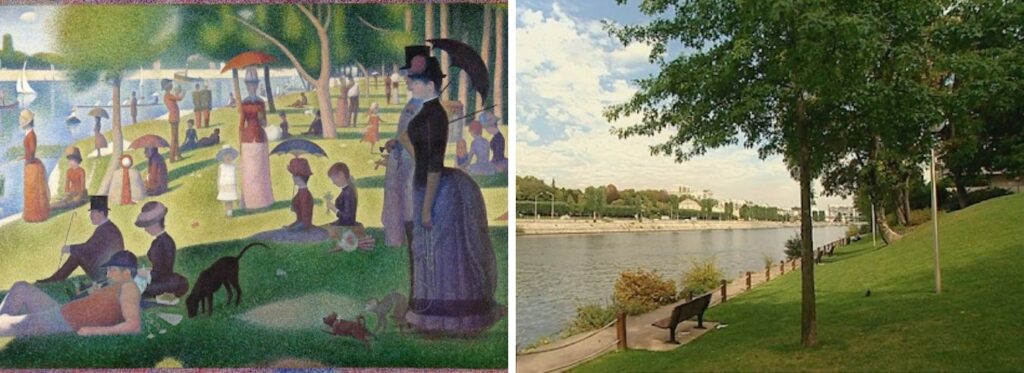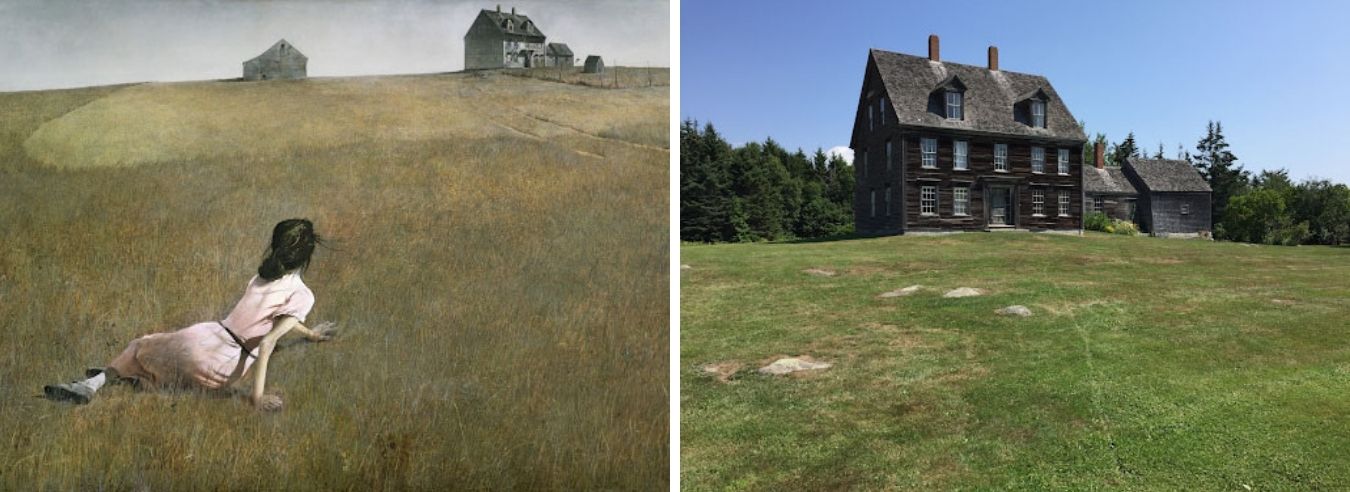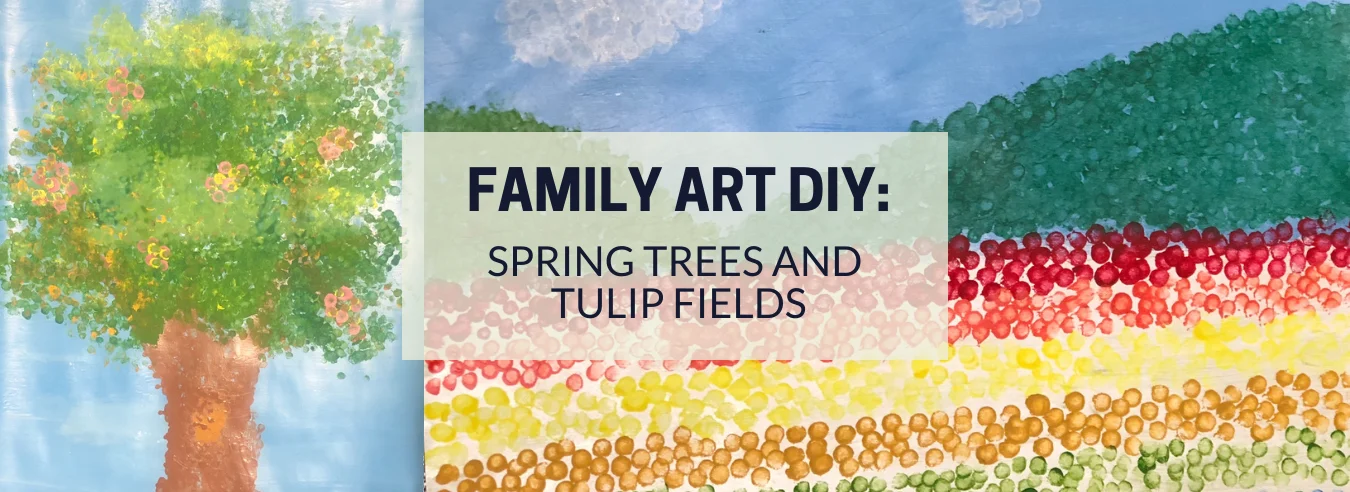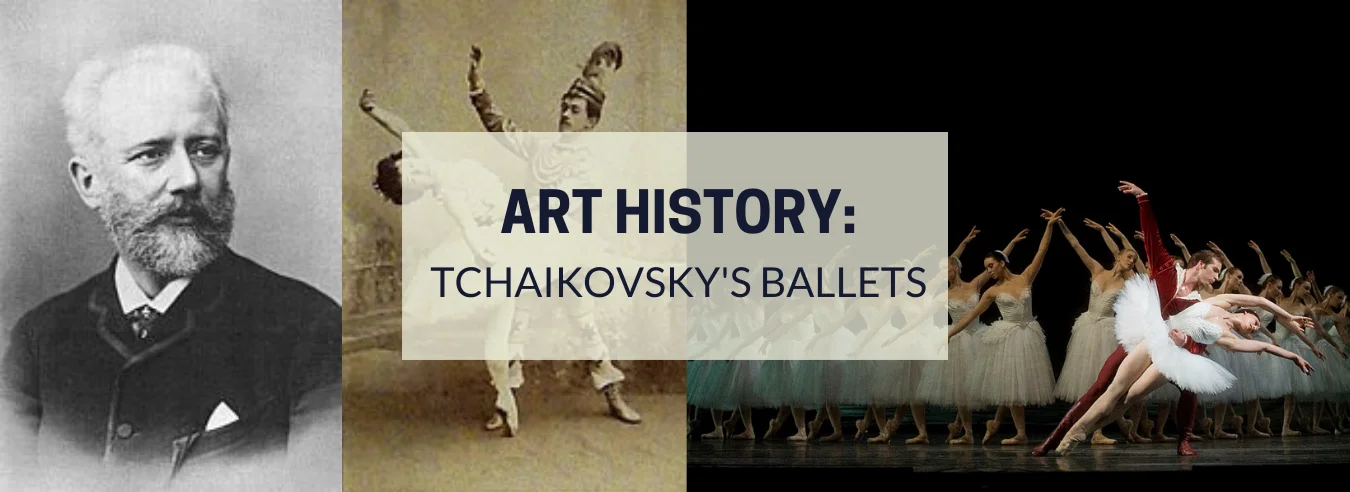With spring in the air, one usually thinks of the flowers and trees in bloom.…
The Real LIfe Inspiration for These 6 Famous Paintings

Artists are known to travel the world in search of inspiration. They have often captured beautiful vistas and bustling cities frozen for a moment in time. Looking at these paintings is like looking through a window into history. We can imagine what life was like during that particular time, who the people or subjects were and where they may be going. This is part of the beauty of art and why we fight so hard to protect and preserve it.
Many of art history’s most famous paintings were inspired by real life locations. Artists have immortalized these places on their canvases, and without knowing, made them famous for centuries to come.
Take a look at these six real locations around the world from famous paintings that you may one day want to visit in person.
-
A Sunday Afternoon on the Island of La Grande Jatte by Georges Seurat

This painting is considered Seurat’s magnum opus, or masterpiece. Knowing how long it took to complete, it becomes clear why this is a well-earned distinction. Seurat began working on this 7 foot by ten foot painting in May of 1884 and continued for nearly eleven months. He took a short break in March of 1985 and finally completed it in May of 1886. Seurat chose to use pointillism, making his work that much more arduous and meticulous. Pointillism is an art style where, instead of brush strokes, the shapes are composed of thousands of tiny clustered dots. The beauty of A Sunday Afternoon is in the close-up details where you can see Seurat’s labor of love. La Grande Jatte is an island in the River Seine near the outer edges of Paris. The park that Seurat spent two years painting has gone through many changes over the years. Without park-goers in era appropriate clothing, it appears decidedly more modern, but there is still endless beauty to be found there.
-
Café Terrace at Night by Vincent van Gogh

One of van Gogh’s most recognized oil-on-canvases, The Café Terrace is the perfect representation of the Impressionist movement. Van Gogh painted this work in 1888, towards the end of his short career. Despite the decades that have passed, we can see that French culture continues many of that era’s activities today. What was then the Café Place du Forum is now called Le Café Van Gogh, and the French streets are still just as filled with people on night strolls or enjoying a nightcap at the café’s outdoor tables. Seeing the real life location that once inspired van Gogh, you can visualize how he was inspired by the yellow glow of the lanterns and the deep blues and violets of the night sky. The café remains a popular tourist attraction in Arles, France to this day. Even locals enjoy stopping by to soak in the view that once inspired one of history’s most celebrated artists.
-
Paris Street; Rainy Day by Gustave Caillebotte

Artists who pursue their craft as a career undoubtedly have other interests and hobbies. Take the French painter Gutave Caillebotte, for example; although he made a name for himself as a painter, he also had a soft spot for the burgeoning art of photography. His art style frequently takes a more realistic approach, and his use of line, composition, and focus reveals a photographer’s sensibilities. In Paris Street; Rainy Day, the angular backdrop of the city is in perfect contrast to the round shapes of the pedestrian’s umbrellas in the foreground. By making the two figures in the foreground the focus, Caillebotte highlights the tailored fashion of late 19th-century France. And, as if adjusting his internal camera lens, Caillebotte depicted the people in the background with less detail and seemingly out of focus. Today, the French architecture of the Place de Dublin remains nearly identical, drawing tourists from all over the world.
-
Christina’s World by Andrew Wyeth

One of the most famous American artworks, Christina’s World, is praised for its understated beauty and simplicity. Wyeth was inspired to paint it when he saw his neighbor’s daughter crawling through the fields. Anna Christina Olson suffered from muscular dystrophy that made walking impossible. Rejecting the confines of a wheelchair, she instead chose to drag herself using her arms to get to her destination. In Wyeth’s painting, she is looking resolutely into the distance, her arm outstretched towards her journey’s end. Because of the way Christina is positioned and the sombre, desaturated colors used by Wyeth, many have remarked that the painting evokes a deep sense of yearning. The painting greatly moved the public and became so popular, that the colonial farmhouse featured in the background became a National Historic Landmark in 2011. Today, The Olson House in Cushings, Maine is owned by the Farnsworth Art Museum and is open to the public.
-
The Hay Wain by John Constable

The epitome of bucolic beauty, John Constable’s painting of a hay wain crossing a river remains one of Britain’s most beloved Romantic-era paintings. Constable completed the oil on canvas in 1821 on the River Stour near Suffolk. The painting gives us a glimpse into rural life in 19th century Britain. It was one of a series of “six-footer” canvases and the size truly gave Constable the ability to add tiny details that may be overlooked at first glance. Elements such as the fisherman hidden in the bushes, the woman drawing water from the river, and the farmhands working in the fields, help The Hay Wain stand out above the rest. Willy Lott’s Cottage that appears on the left side of the painting has been preserved over the years. Although it’s no longer a quaint farmstead, the cottage and the countryside surrounding it remains just as beautiful.
-
Fuji from Kawaguchi Lake by Hiroshi Yoshida

Mount Fuji is the tallest mountain in Japan and its impressive beauty has inspired artists for generations. Yoshida completed this work in 1926 and became an example of impressionism’s influence on the world. This painting was part of the shin-hanga movement that attempted to bring back the 17th century art style of woodblock prints (or ukiyo-e). In a beautiful mixture of eastern and western styles, Yoshida created a romantic sunset landscape on traditional Japanese materials. Looking across Kawaguchi Lake today, you can gaze upon that same sunset that inspired Yoshida and so many others both before and after him.



